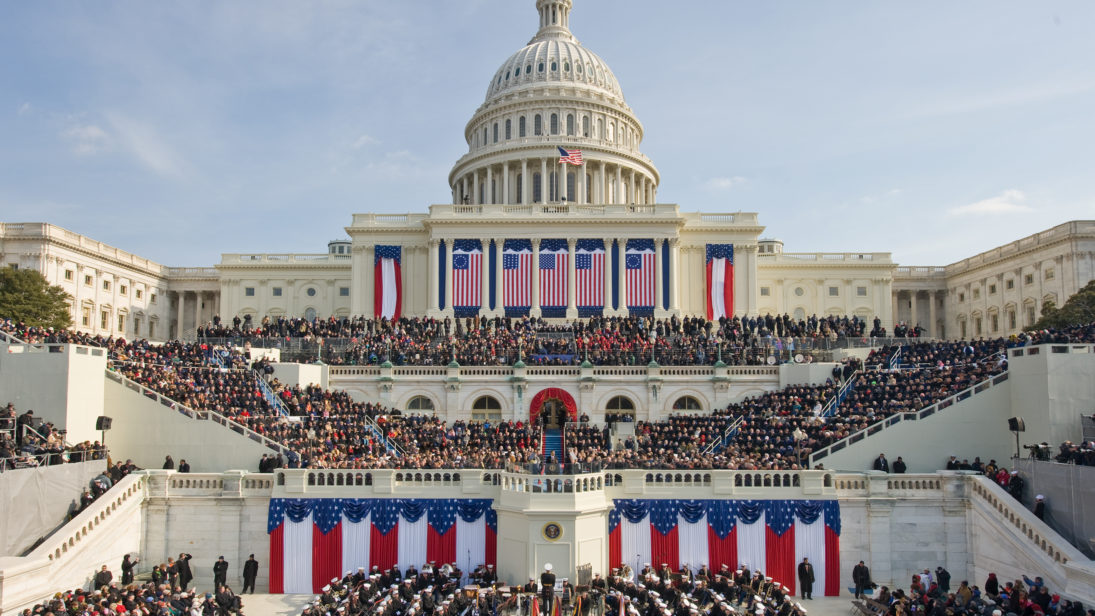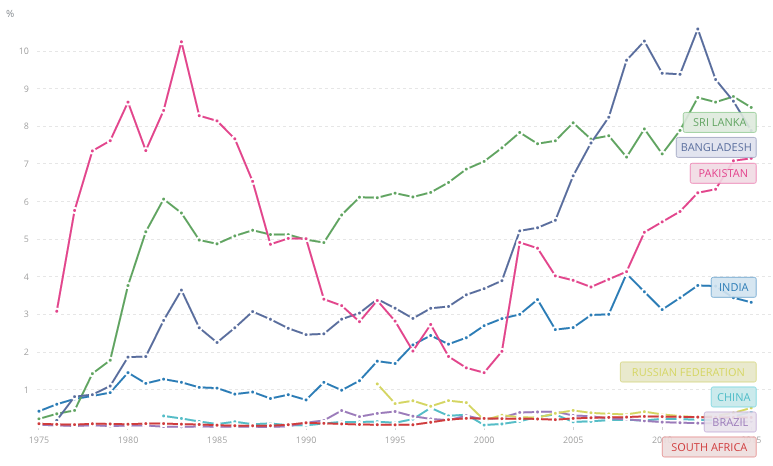
“Top priorities [for a new U.S. president] are nearly always domestic—economic growth, how to adequately provide social services and education, and how to balance the budget. When it comes to foreign affairs, the United States government tends to focus first on countries that threaten U.S. interests, or countries that play an active role in countering those threats.”
—U.S.-India Security Cooperation, Center for Strategic and International Studies Report, 2016
The above statement provides a helpful framework to understand the type of policy issues that will be prioritized in the next administration’s agenda. Regardless of who wins the upcoming presidential election, the new U.S. president will first focus on questions related to the domestic economy. And when an economy is as globally integrated as the United States, even seemingly domestic issues end up having significant global ripple effects.
Domestic Issues that will Impact South Asia
A critical domestic issue that will have direct repercussions for South Asia is the next administration’s immigration policy. Indians are the second-largest immigrant group in the United States while America is the fifth-most popular destination for Pakistani emigrants. Apart from contributing to the U.S. economy, these immigrants send back substantial personal remittances to their country of origin. For example, remittances from the United States to India were at $11.5 billion in 2015 alone. These flows are important because personal remittances are a major source of foreign exchange for all South Asian economies. A graph of personal remittances as a percentage of Gross Domestic Product (GDP), based on World Bank data, gives an indication of the importance of remittances to South Asia when compared to, for example, the BRICS nations.

Personal remittances as % of GDP (1975-2015). Source: World Bank
Thus, all of South Asia would be rooting for an immigration-friendly policy from the next U.S. president. But given how the “American jobs for American people” rhetoric has been played up in the run up to the elections, an air of uncertainty is palpable. Republican Party candidate Donald Trump has repeatedly spoken about a tough immigration policy by calling for a hike in the minimum wage paid to H1B visa holders. On the other hand, Hillary Clinton intends to pass a comprehensive immigration reform that creates “a path to citizenship” for qualifying immigrants. Given its importance, what the eventual winning candidate does on immigration will thus be tracked keenly in South Asia.
Foreign Affairs Issues Concerning South Asia
Perhaps the first South Asia-related foreign affairs issue under consideration by the new administration would be the way forward in Afghanistan. Even though the Obama administration eventually decided to retain troops in Afghanistan, questions over continued American presence in the war-torn country will remain on the table once the new president takes office.
It is important to note here that Afghanistan’s elite remain favorably inclined towards the United States, and would like the next administration to continue maintaining American military presence until secure conditions are restored in Afghanistan. Afghans also remain positively inclined towards India and see hope in the India-US-Afghanistan trilateral which has, for the first time, brought these two powerful regional actors on the same side in Afghanistan. Converting the trilateral into a multilateral platform for all players invested in establishing peace in Afghanistan (including Iran, Tajikistan, Uzbekistan, Turkmenistan and Russia) can differentiate this trilateral from similar initiatives that have failed to deliver in the past. Because cooperation with Russia in Afghanistan would be a difficult proposition domestically for the United States, India can play a bridging role.
The second foreign affairs issue that the next administration will face is the not-so-unfamiliar Pakistan conundrum—how to react to a rent-seeking nuclear-armed state that continues to make the distinction between “good” and “bad” terrorists. Perhaps, this policy dilemma was best explicated by Robert Blackwill, former U.S. ambassador to India who stated:
“Every time a new administration in Washington comes to office, they get worried about Pakistan, which has a stockpile of nuclear weapons. The US Secretary of State then visits Pakistan and meets the top leadership. He is systematically lied to by Pakistan’s leadership, and this goes on for about two years. In the third year, he tells his colleagues at the (US) State Department that Pakistan’s leaders have been lying to him. Then they think about how to deal with the situation, and the elections come in and a new administration takes charge. The same thing is (then) repeated.”
Coming out of this vicious cycle will be a key success indicator for the next administration. Concerned with Pakistan’s role in supporting extremist groups in Afghanistan, such as the Haqqani Network, Washington has reduced economic aid and military reimbursements to Islamabad over the last five years. However, the United States still remains Pakistan’s biggest export market, and the policy of distinguishing between economic and security aid to Pakistan continues, ignoring the fact that cash is fungible. Money allotted as economic assistance creates fiscal space for the military to invest on weapons and jihadi assets. The key question the next administration will then confront, just like the Bush and Obama administrations, is the following: is the military—jihadi complex in Pakistan itself a part of the larger problem, or is Pakistan simply too important of a stakeholder to lose?
Managing China’s growing power is perhaps the biggest foreign policy concern in Washington today. The next administration is likely to secure stronger security partnerships with Japan, Australia, India, and other Indo-Pacific nations that have concerns over China’s role in Asia and the world. These security partnerships will provide a tremendous opportunity for countries like India to increase their own power projection capabilities. How the next administration follows the Obama administration’s pivot to Asia will be keenly observed in the Indian subcontinent.
With all of these factors and more on the table, the next president’s South Asia policy will have far reaching consequences not just for South Asia, but also for the rest of the world.
Editor’s note: As the United States goes to the polls next week to elect a new leader, South Asian Voices contributors Hamzah Rifaat Hussain, Pranay Kotasthane, Sana Ali, and Monish Tourangbam analyze what the next U.S. president’s policy priorities should be in South Asia, why the region is critical to American interests, and what implications U.S. policies can have for stability in the region. Read the entire series here.
***
Image: US Capitol, Flickr


